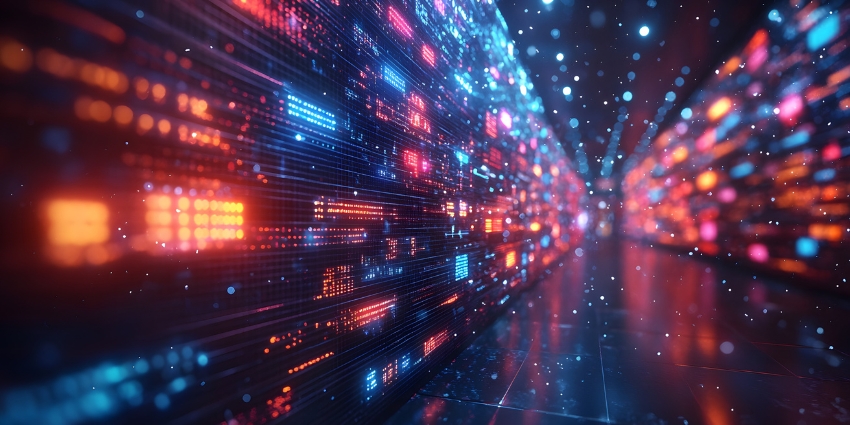The Microsoft Dynamics 365 Contact Center has turned one year old.
Microsoft commemorated the occasion by releasing a blog post, claiming it’s ushering in a “new era of engagement” with its CCaaS platform.
But, how different is the platform from what is already out there, and what more can Microsoft do to gain market share?
The following three takes on Microsoft’s first 12 months in CCaaS answer these questions, and perhaps raise one or two more.
1. Microsoft’s Differentiators Are In Its Ecosystem
Slowly but surely, cloud contact center solutions are becoming commoditized.
As this trend kicks into gear, hyperscalers, like Microsoft, have the opportunity to differentiate by drawing on their broader portfolios to deliver unique innovation.
Consider how AWS is leveraging its global telephone network to route calls to the AWS region closest to the customer, optimizing voice. Meanwhile, Cisco is embedding its ThousandEyes product across its CCaaS platform to bolster security.
While Microsoft came to market with a Nuance conversational IVR, Power Bots, and Teams swarming, there is an opportunity to go much further.
The tech giant has started to act on this. For instance, it announced Microsoft Teams Phone extensibility in March, allowing businesses to leverage the same voice platform for their contact center and unified communications deployments. That promises to simplify CCaaS deployments for existing Teams customers, streamline billing, and strengthen worldwide voice coverage.
Yet, there are many more possibilities for what Microsoft could do. For instance, the company leads the business intelligence (BI) space, as per Gartner, and is now reimagining reporting so that AI agents take prompts in written English and create dashboards that didn’t exist minutes before. If Microsoft can bring that capability to contact centers, it could transform reporting.
Other possible areas for differentiated innovation include leveraging tooling from Dynamics 365 Customer Voice to improve customer feedback mechanisms and Dynamics 365 Human Resources to transform contact center workforce management (WFM) with smarter employee scheduling, shift-swaps, and holiday approvals.
2. Copilot Isn’t the Show Stopper Microsoft Had Hoped, But It’s Solid
Microsoft launched the Dynamics 365 Contact Center as a “Copilot-first” solution.
That design had two major upsides. First, with Copilot able to run across different systems, Microsoft could bridge the contact center with broader enterprise solutions, connecting the resolution workflows that flit between them.
Second, Microsoft could position itself as a thought leader, touting its special relationship with OpenAI as an opportunity to deliver new AI assistance use cases ahead of rivals, which rely on third-party providers to release AI models while following a loose roadmap.
However, these upsides look less meaningful than 12 months ago.
For starters, the broader AI conversation has pivoted from one platform to rule them all – like Copilot – to ecosystems, where companies can orchestrate AI agents from various vendors. As such, rival brands can connect their assistants to AI agents in the back and middle office, automating cross-functional resolution flows, too.
Meanwhile, AI models – like CCaaS platforms – have become more commoditized, as underscored by the bombshell DeepSeek launch earlier this year.
Without these big differentiators, the Copilot within the Microsoft Dynamics 365 Contact Center is not all that different from AI assistants within competitive platforms.
Microsoft could offer its Copilot at a lower cost, as it won’t have to pay extra for third-party hosting. Yet, its price point isn’t yet disruptive.
All that said, Microsoft has developed some innovative Copilot and AI agent use cases for its contact center over the past 12 months.
For instance, it released an AI agent that understands how the best live reps handle particular customer contact reasons. This works with another that develops knowledge articles based on that intelligence, which can feed into a customer-facing assistant.
That announcement underscored how Microsoft can be a thought leader in contact centers. Indeed, while other providers have raced to develop similar innovations, like Sprinklr, the move emphasized that the tech giant isn’t just playing around in this space.
3. Microsoft Hasn’t Made a Big Bang, But It Will Be a Slow Burn
Microsoft hasn’t done in CCaaS what it did in UCaaS and blitz the space.
There are several reasons for this. Chief among those is that few larger businesses, especially in highly-regulated sectors, will roll the dice on a new CCaaS platform without excessive evaluation and conferring with reference customers. Customer retention is too important.
Now, the tech juggernaut does support several enterprise contact centers, including 1-800 Flowers, Lenovo, and its own, which serves 45,000 global contact center reps.
Yet, it needs time to build more compelling customer stories and a network of ambassadors across industries who will vouch for the company. AWS does this well, and Microsoft could consider following its rival’s lead.
Such considerations are slightly less important in the midmarket, where Microsoft is starting to find success. Here, the platform’s tie-in with Teams, CRM-centric design, and familiarity make it a strong option.
However, the enterprise is a different beast. To attract these buyers, Microsoft may consider more innovations that leverage its broader ecosystem, stories of its platform pushing the envelope beyond commonplace GenAI use cases, and a disruptive pricing model that takes advantage of the Dynamics 365 platform being hosted on Azure.
Nevertheless, this is only the Microsoft Dynamics 365 Contact Center’s first birthday. The company is adding bricks to the wall, with baseline WFM capabilities only recently included.
As these actions click into place, Microsoft will likely pick up steam. After all, its size, resources, and portfolio make it a standout player in a crowded market.







